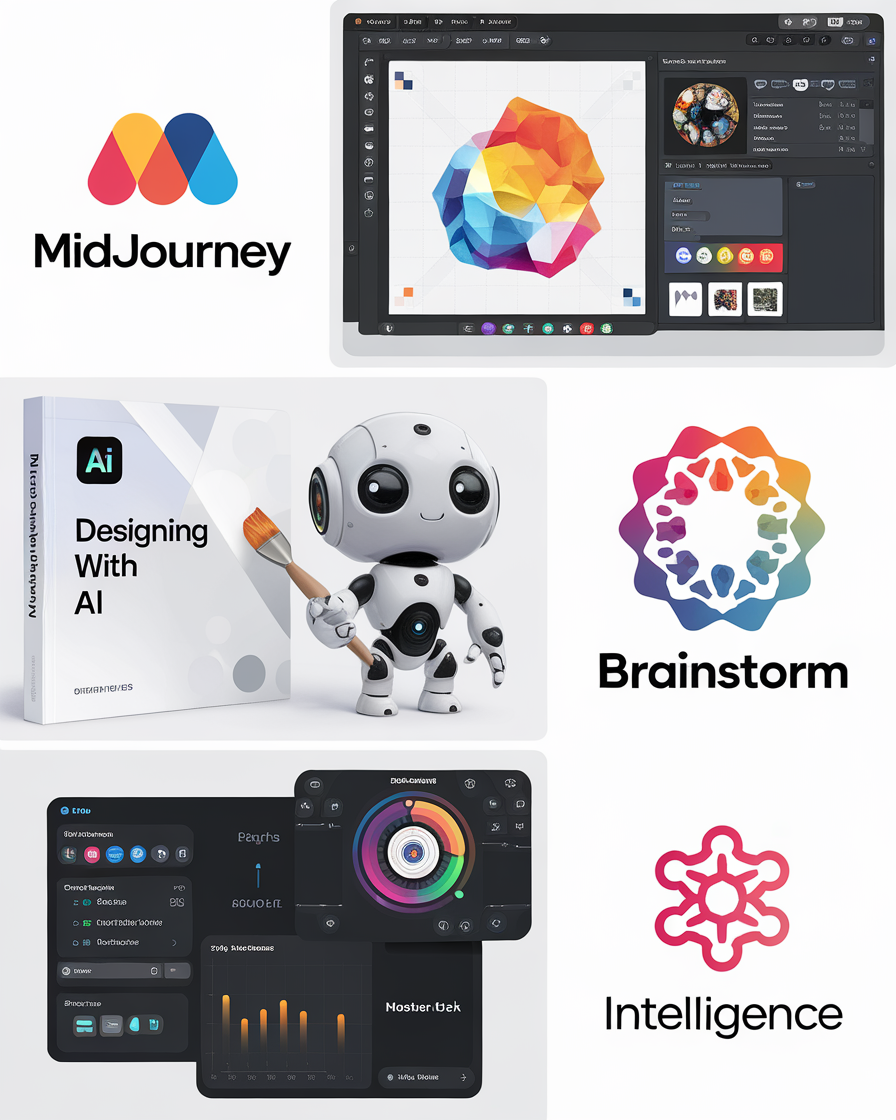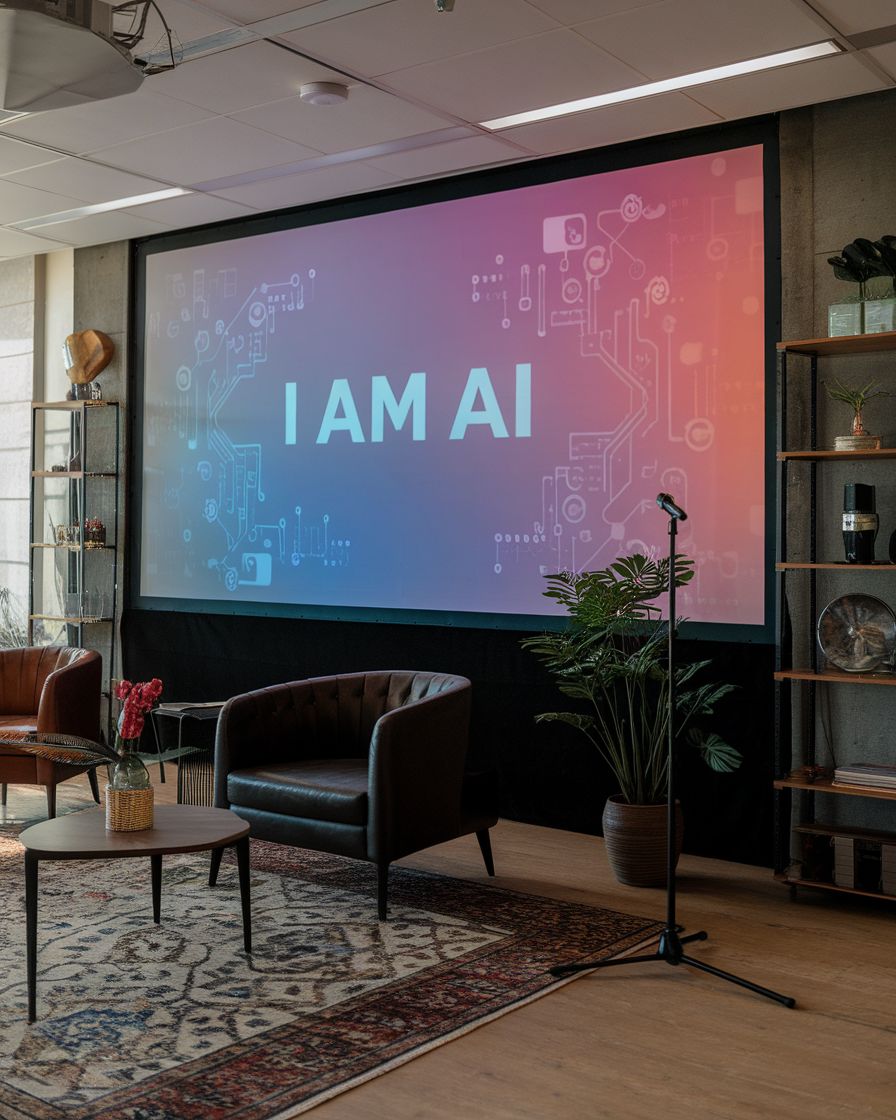In today’s visually-driven world, captivating graphic design and compelling visual content are no longer luxuries – they’re necessities. From social media feeds to website interfaces, stunning visuals are key to grabbing attention and communicating effectively. Thankfully, the power of Artificial Intelligence is revolutionizing this space, offering incredible tools to streamline your creative process and elevate your visual output. This article will explore five top AI tools that are transforming graphic design and visual content creation.
1. Adobe Firefly: Unleashing Generative AI for Visuals

Adobe Firefly stands at the forefront of generative AI for graphic design, offering a suite of powerful features that empower creators to produce stunning visuals with unprecedented ease. What sets Firefly apart is its deep integration within the Adobe ecosystem, meaning designers can seamlessly incorporate AI-generated elements directly into their existing workflows in Photoshop, Illustrator, and other Creative Cloud applications. This eliminates the friction often associated with using disparate tools, allowing for a truly fluid creative experience.
Firefly’s core strength lies in its text-to-image capabilities. Users can simply type descriptive prompts, and Firefly will generate a variety of images, illustrations, and even vector graphics based on those commands. This opens up a world of possibilities for concepting, mood boarding, and quickly generating variations of visual ideas. Imagine needing a specific texture for a background, or a unique icon for a web design – Firefly can conjure it up in moments, saving countless hours typically spent searching stock libraries or creating from scratch.
Beyond basic image generation, Firefly excels in more nuanced tasks. Its “Generative Fill” feature, for example, allows users to select an area of an image and instruct Firefly to intelligently fill it with new content that seamlessly blends with the existing visual. This is invaluable for expanding canvases, removing unwanted objects, or even adding new elements in a way that feels organic and natural. Similarly, “Generative Expand” can intelligently extend an image beyond its original boundaries, predicting and adding content to maintain compositional integrity.
Another remarkable aspect of Firefly is its “Text Effects” capability. This allows designers to apply unique and visually rich textures and styles to text, transforming ordinary typography into extraordinary visual elements. Think about creating headlines that appear to be made of fire, ice, or even intricate floral patterns – Firefly makes this not only possible but remarkably simple, requiring just a few clicks and a descriptive prompt.
The underlying AI models in Firefly are continuously being trained on vast datasets of images, ensuring a high level of quality and diversity in the generated output. Adobe is also committed to ethical AI practices, focusing on responsible data sourcing and offering features that help identify AI-generated content. For graphic designers and visual content creators, Firefly is more than just a tool; it’s a creative partner that amplifies their abilities, allowing them to explore new artistic avenues and deliver exceptional visual results faster than ever before. This AI tool for graphic design truly transforms the creative workflow.
Tip: Experiment with highly descriptive and nuanced prompts to get the most accurate and creative results from Firefly’s text-to-image generation. The more detail you provide, the better the AI can understand your vision.
2. Midjourney: Crafting Artistic Visuals with AI

Midjourney has rapidly gained recognition as one of the most powerful and accessible AI tools for generating stunning, high-quality images from text prompts. While similar to other text-to-image generators, Midjourney excels in producing highly artistic, often ethereal, and aesthetically captivating visuals. It has become a go-to for artists, designers, and even hobbyists looking to push the boundaries of visual content creation.
What truly differentiates Midjourney is its emphasis on artistic interpretation. Unlike some tools that aim for photorealistic accuracy, Midjourney often injects a unique stylistic flair into its outputs, frequently resulting in images that feel more like commissioned artworks than mere digital renderings. This makes it particularly appealing for conceptual art, digital illustrations, and creating unique visual assets that stand out from conventional stock imagery.
The interaction with Midjourney primarily occurs through a Discord bot, which makes it incredibly user-friendly once you get past the initial setup. Users input commands (prompts) directly into a chat interface, and Midjourney then processes these commands to generate a series of four initial image variations. From there, users can choose to upscale a particular image, generate more variations of a chosen image, or make subtle stylistic adjustments. This iterative process allows for a high degree of control and refinement, enabling users to hone in on their desired visual outcome.
Midjourney’s capabilities extend beyond simple image generation. It supports various parameters that allow users to control aspects such as aspect ratio, artistic style (e.g., –stylize), chaos level (–chaos), and even image weight (–iw) for incorporating existing images into new generations. This level of control empowers users to fine-tune their creative vision and achieve very specific aesthetic results, making it a powerful AI tool for graphic design and visual content.
Many artists and designers use Midjourney for concept art, developing unique characters, creating abstract backgrounds, or even designing entire fantasy landscapes. Its ability to quickly generate multiple interpretations of a prompt is invaluable for brainstorming and rapid prototyping of visual ideas. Furthermore, the Midjourney community itself is a vibrant hub of creativity, where users share prompts, discuss techniques, and inspire one another with their incredible AI-generated creations. This collaborative environment further enhances the learning and creative experience.
Consideration: While Midjourney is incredibly powerful, mastering its prompt engineering can take some practice. Experiment with different keywords, styles, and parameters to unlock its full artistic potential.
3. DALL-E 3: Precision and Versatility in AI Image Generation

DALL-E 3, developed by OpenAI, represents a significant leap forward in AI image generation, offering unparalleled precision, versatility, and a deep understanding of natural language prompts. Building on the success of its predecessors, DALL-E 3 is designed to generate highly detailed and contextually accurate images from even complex and nuanced text descriptions, making it an indispensable AI tool for graphic design and visual content creation.
One of the most remarkable improvements in DALL-E 3 is its ability to interpret and follow intricate prompts with greater fidelity. Where previous versions might sometimes struggle with multi-clause sentences or specific spatial relationships, DALL-E 3 excels. This means users can describe scenes with multiple objects, specific actions, and intricate details, and the AI will generate images that closely match those descriptions. For graphic designers, this translates to less need for prompt iteration and more consistent, predictable results.
DALL-E 3’s integration with ChatGPT is another game-changer. Users can engage in a conversational dialogue with ChatGPT to refine their image prompts, allowing the AI to help them articulate their visual ideas more effectively. ChatGPT can suggest improvements, add details, or even completely rewrite prompts to optimize them for DALL-E 3, essentially acting as a creative assistant. This conversational interface lowers the barrier to entry for users who may not be accustomed to traditional prompt engineering, making sophisticated image generation more accessible.
Beyond its understanding of complex prompts, DALL-E 3 also demonstrates remarkable versatility in generating a wide array of visual styles. From photorealistic images to abstract art, illustrations, and even 3D renders, DALL-E 3 can adapt its output to suit various aesthetic requirements. This makes it incredibly valuable for graphic designers working on diverse projects, whether they need marketing collateral, website graphics, or unique visual assets for branding.
Another practical benefit of DALL-E 3 is its capability to generate text within images more accurately than many other AI tools. While still not perfect, its improvements in this area are significant, meaning designers can generate images that include legible headlines, labels, or other textual elements, reducing the need for post-generation editing in external software. This enhances its utility as a comprehensive AI tool for graphic design.
OpenAI’s commitment to responsible AI is also evident in DALL-E 3, with safeguards in place to prevent the generation of harmful or inappropriate content. For businesses and individual creators, DALL-E 3 offers a powerful and reliable solution for generating bespoke visual content, accelerating creative workflows, and exploring new visual possibilities with unprecedented precision.
Tip: Leverage DALL-E 3’s integration with ChatGPT. Don’t be afraid to have a conversation with ChatGPT about your visual idea – it can help you craft the perfect prompt for precise results.
4. Canva’s Magic Studio: AI-Powered Design for Everyone

Canva has long been a favorite for its user-friendly interface and extensive template library, making graphic design accessible to millions. With the introduction of Magic Studio, Canva has elevated its platform by integrating a suite of powerful AI tools, transforming it into an even more indispensable resource for graphic design and visual content creation. Magic Studio is designed to empower users, regardless of their design expertise, to create professional-quality visuals with incredible speed and ease.
Magic Studio encompasses a range of AI-powered features, each designed to streamline different aspects of the design process. One of the standout features is “Magic Write,” which acts as an AI-powered text generator within Canva. This is invaluable for creating compelling headlines, body copy, and calls to action for your designs. Instead of staring at a blank page, designers can leverage Magic Write to kickstart their copywriting, ensuring their visual content is accompanied by engaging and relevant text.
Another key component is “Magic Design,” which allows users to upload an image or text prompt, and Canva’s AI will instantly generate a variety of design templates and layouts tailored to their content. This is a massive time-saver, particularly for those who struggle with initial layout ideas or need to quickly create multiple design variations. Magic Design takes the guesswork out of starting a project, providing a professional foundation with just a few clicks.
For visual content creators, “Magic Edit” is a game-changer. This feature allows users to select an object in an image and then describe what they want to replace it with. The AI will intelligently fill the selected area with the new object, seamlessly blending it into the existing image. This is incredibly useful for making quick edits, swapping out elements, or adding new details without needing advanced photo editing skills. Similarly, “Magic Grab” intelligently selects the subject of an image, allowing you to easily reposition, resize, or edit it independently from the background.
Canva’s “Text to Image” tool, powered by AI, enables users to generate unique images directly within the Canva editor by typing a description. This means no more hunting for specific stock photos; if you can describe it, Canva can generate it, adding a personalized touch to your visual content. This further solidifies Canva’s position as a comprehensive AI tool for graphic design.
The beauty of Magic Studio lies in its integration within the familiar Canva environment. Users don’t need to learn complex new software; the AI tools are seamlessly embedded into the existing workflow, making them intuitive and easy to adopt. This democratizes the power of AI in design, making sophisticated capabilities accessible to a wider audience, from social media managers to small business owners and educators.
Consideration: While Canva’s AI tools are incredibly user-friendly, remember that the quality of your input (text prompts, initial images) still significantly impacts the AI’s output. Provide clear and concise instructions for the best results.
5. Remove.bg: Instantly Removing Backgrounds with AI Precision

While not a generative AI tool in the same vein as Midjourney or DALL-E 3, Remove.bg is an incredibly practical and widely used AI tool that has revolutionized a crucial aspect of graphic design and visual content creation: background removal. This specialized AI-powered service simplifies a task that traditionally required painstaking manual effort, making it an indispensable part of many designers’ workflows.
The core functionality of Remove.bg is straightforward yet remarkably effective: it automatically detects the foreground subject in an image and precisely removes the background, leaving a clean, transparent cutout. What makes it stand out is its speed and accuracy. Unlike manual selection tools in image editing software, which can be time-consuming and prone to errors, Remove.bg leverages sophisticated AI algorithms to achieve near-perfect cutouts in seconds.
This AI tool is a massive time-saver for a multitude of graphic design tasks. For e-commerce businesses, it’s invaluable for creating product photos with clean, consistent backgrounds, which is essential for a professional online presence. For social media managers, it allows for quick creation of engaging visual content by easily superimposing subjects onto new backgrounds or creating collages. Graphic designers frequently use it to isolate elements for complex compositions, create transparent logos, or prepare images for web design.
Remove.bg handles a wide variety of image types, from portraits and product shots to objects with intricate edges like hair or complex machinery. The AI is trained on vast datasets of images, enabling it to intelligently differentiate between foreground and background elements, even in challenging scenarios. While it offers a simple user interface for quick, one-off removals, it also provides an API for developers to integrate its functionality into other applications and workflows, making it scalable for larger operations.
Beyond simply removing backgrounds, Remove.bg often provides options to add new backgrounds, either a solid color or a custom image, directly within its interface. This further streamlines the process of preparing images for specific design needs. Its efficiency and accuracy have made it a go-to utility for anyone needing to quickly and reliably isolate subjects in their visual content. For anyone dealing with visual assets, this AI tool for graphic design is a true productivity booster.
Tip: Even though Remove.bg is highly accurate, always do a quick visual check of the output for any subtle imperfections, especially with very complex or fine details in the subject.
The landscape of graphic design and visual content creation is being continually reshaped by the incredible advancements in Artificial Intelligence. From generating entirely new images and artistic concepts with tools like Adobe Firefly, Midjourney, and DALL-E 3, to streamlining everyday design tasks with Canva’s Magic Studio and the precision of Remove.bg, AI tools are empowering creators to work faster, smarter, and with unprecedented creative freedom. Don’t feel overwhelmed; start small by exploring one of these powerful AI tools for graphic design that aligns with your current needs. Dive in, experiment, and unlock new dimensions in your visual content journey. What AI tool will you try first? Perhaps explore our other related posts on leveraging AI for marketing success!



